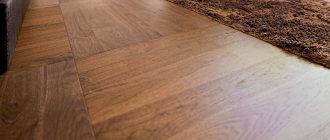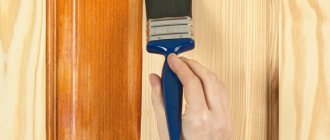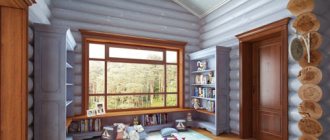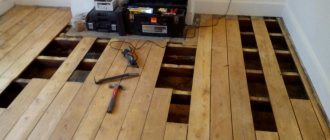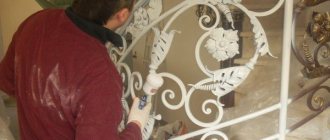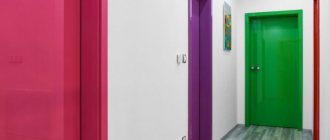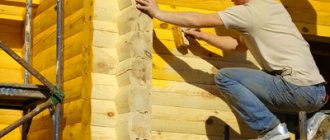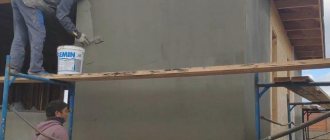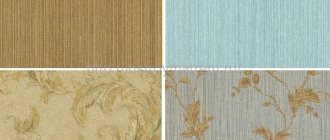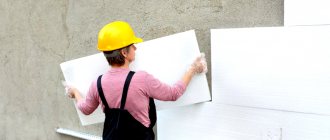Most often, after sanding, the parquet is treated with varnish. This coating is quite effective in protecting the wood surface from damage and moisture. However, the varnish completely blocks the pores of the wood, thereby disrupting moisture and air exchange. In addition, the surface covered with it looks somewhat unnatural and not natural.
Meanwhile, there are other types of parquet finishes that do not have such disadvantages. We will talk about these tools in detail below in the article.
What influences the choice?
If you use the services of specialized teams, choosing the varnish will be their task. However, if you decide to do the work yourself or control the stage of purchasing material, you need to know what nuances you should pay attention to when choosing a coating:
- Degree of load on the room . The higher the traffic in a given room, the more wear-resistant the coating should be. It is wise to choose a separate type of varnish for rooms such as the bedroom and children's room, and separately for the kitchen, corridor and living room;
- Durability of the coating. To understand how high-quality the composition is, you first need to understand that “varnish” is a general name. In fact, it is a solution that includes varnish and solvent. The varnish content is indicated as a percentage and can range from 5-35%. This number is called the “dry residue”. The higher the number of dry residues, the more expensive and better the composition. Compositions with the maximum varnish content are labeled “based on pure polyurethane”;
- Gloss level. The final finish can be matte, semi-matte, silky-matte, semi-gloss, or glossy. In this case, everything is individual, but I would like to talk about some of the features of the glossy surface. Firstly, gloss can reflect, which can have a negative effect on the organs of vision. Secondly, this coating is more suitable for interiors in a classic style. Thirdly, any coating will wear off a little over time. In this case, the abrasion will be uneven and more noticeable in the passage areas of the room. On a glossy surface, such places will immediately catch the eye and the coating will need to be updated to eliminate the imperfections;
- Drying speed. There are varnishes that can dry in a few hours, while it is possible to apply several layers in just one day. Other formulations may take 24 to 48 hours to dry. You should pay attention to this factor if you are limited in time, as well as when choosing a performer. After all, some unscrupulous teams promise to finish all the work within 24 hours, while using varnishes that, by default, cannot dry so quickly. As a result, either the coating will have defects, or in fact the composition that you wanted will not be used, or only one layer of varnish will be applied;
- Color spectrum . There are varnishes that are neutral, that is, they do not change the shade of the wood after application. And there are compositions that “set fire” to the color of wood, painting it in more saturated shades and emphasizing the structure;
- Environmental friendliness . This is a very important parameter that determines the harmlessness of the composition to human health. After all, some compounds can emit harmful vapors into the environment throughout their entire service life. The safest are water-based varnishes, which do not even have an unpleasant odor;
- Type of wood. Be sure to consider the compatibility of the varnish and the type of wood from which the parquet is made.
In addition to the above, all formulations differ in their chemical composition. Let's consider the features, as well as the advantages and disadvantages of each individual group.
Classification
Conventionally, all preparations for protecting parquet can be divided into several categories:
- The initial protection is a primer and antiseptic impregnation, fire-resistant and porosity-blocking.
- Tinting. This includes colored oils with coloring pigments, stains, and patinas.
- The finishing layer is oil, varnish and mastic.
- Protective coating, final layer – wax, gel, polish.
- Repair preparations for restoring the coating - putty, grout, paste.
We will analyze in detail what is used to rub parquet floors, and analyze the characteristics and features of the use of popular care products.
Treatment of parquet with special preparations preserves the aesthetics of the coating for a long time
Primer varnishes
Please note that primer varnish is not a stand-alone coating . This is a kind of intermediate coating that is applied to the base for the purpose of :
- ensure uniform shade of the finishing coat if a tint varnish is used;
- ensure a higher degree of adhesion of the coating to the base;
- reduce finishing coat consumption. Primer varnish, filling the pores of wood, significantly reduces its absorption rate, as a result you will need less expensive finishing varnish;
- to neutralize and isolate natural oils from exotic woods;
- to reduce the adhesive effect of the topcoat. If varnish is used not on a water-based basis, but on any other base, when it gets into the joints of parquet boards, it will glue the fragments together. If you pre-coat the surface with a primer varnish, this can be avoided;
- when it is necessary to minimize the moisture level of the parquet. Each finishing composition is applied under certain conditions, which include ambient temperature and humidity, as well as the moisture level of the wood itself. If the degree of drying of the parquet does not meet the required parameters, the final coating may have defects in the form of bubbles and foam. To avoid this, it is recommended to apply a preliminary layer of primer varnish.
Primer varnishes are quick-drying. Before purchasing such a composition, be sure to ensure that its base matches the base of the finishing varnish. For example, under water-based varnish it is necessary to apply a water-based primer, etc. Some modern types of varnishes do not require prior application of primer, which will be indicated on the packaging.
What tools will you need for the job?
Varnishing a floor is a labor-intensive process that requires careful preparation. Start with tools and equipment.
You will need:
- paint and varnish materials: primer or impregnation, tinting glazes or stains, parquet putty, varnish, solvents;
- application tools: wide and narrow brushes (for painting corners and joints of walls and floors), velor rollers, spatulas;
- a bath or bucket for mixing the varnish composition;
- fine-grained paper (220-400 units) for intermediate sanding or attachments for a sander (grain size - from 120 units);
- belt grinder, surface grinder (planetary) and angle grinder (boot); It is preferable to rent from the professional category;
- construction vacuum cleaner.
Before work, carefully read the instructions on the labels of paints and varnishes. The consumption indicated on them is an average and does not always correspond to reality.
Water-soluble varnishes
Water-based varnishes contain a solvent, an emulsifier and, accordingly, water. It is precisely because of the presence of water that they dry much longer than varnishes on other bases, because the water takes time to completely evaporate.
The drying process of water-based varnish is sequential - first the water evaporates, and then the solvent begins to evaporate. Accordingly, as the water part decreases, the solvent concentration increases. When a certain concentration is reached, the solvent begins to break down the binding components and evaporate. After this, only a varnish film remains on the surface.
The percentage of solvent in the composition may vary. There are varnishes without solvent content, with 5% or 15%. This parameter does not affect the degree of adhesion to the base. Note. that many experts recommend applying a primer under water-based varnish without fail. This must be done in order to reduce the amount of compound that gets between the wooden dies, which can subsequently lead to the formation of unpleasant squeaks. Water-based varnishes have the following advantages:
- They are safe for health;
- There is practically no unpleasant odor, which makes it possible to carry out work without the need to evacuate all household members from the apartment;
- They are non-flammable, which is important in rooms with a high level of fire hazard;
- They have an affordable price.
As for the disadvantages:
- Increased demands on the choice of tools. Water-based varnishes are recommended to be applied only with a roller. It, in turn, should be soft enough, but not have too long a pile;
- Low wear resistance coefficient. If a frankly cheap water-based varnish was chosen for the job, then the coating will really wear off very quickly. But, if the varnish is expensive and of high quality, it can be safely used in rooms such as rest rooms;
- Long drying process;
- Incompatible with wood species such as beech, pine and hornbeam.
Parquet varnishing price
Attention! All prices are relevant for Moscow and the Moscow region.
Professional care of parquet boards will cost from 170 rubles per square meter. Park scraping today costs at least 180 rubles per square. Restoration of parquet boards will cost at least 130 rubles per square meter. Laying parquet will cost approximately 400 rubles per square meter. Professional tinting of parquet boards will cost 180 rubles at least per square meter. Thus, the price of varnishing parquet can vary significantly. Here is a complete list of work on sanding and varnishing parquet scraping:
Parquet varnishing price
Approximate cost of parquet varnishing in Moscow:
Parquet varnishing price - repairs and other work
At the end, we offer a video on how to varnish parquet in an apartment with your own hands:
Waterless polyurethane varnishes
Such compositions dry much faster than water-based varnishes. As soon as the solvent evaporates, the composition will harden.
Polyurethane varnish can be one-component (PUR) or two-component (DD).
The varnish base can be acrylic, urethane or solvent. In most cases, various aromatic impurities are added to the compositions to neutralize the pungent chemical odor. Polyurethane varnishes can be called universal, because they can be used both in rooms with low and high traffic. The coating is durable and wear-resistant. In addition to this, there are other advantages:
- UV resistance;
- Heat resistance;
- Elasticity;
- Resistant to moisture;
- Not demanding on the room microclimate.
The disadvantages include:
- The ability to glue dies when they get into the gaps between them;
- Demanding quality of parquet drying. Wood moisture content should not exceed 8%, otherwise the coating will bubble;
- If water gets on the surface of the varnish before it is completely dry, it may cause foam or bubbles to form.
We can say that polyurethane varnish is the best choice for covering parquet in any room.
Parquet oil
It is advisable to use parquet oil if there is a risk of damage to the coating as a result of exposure to moisture or temperature fluctuations. This product is a mixture of mineral and plant components.
Wood oil extends the life of the floor
Coating parquet with oil can significantly increase its service life. However, such a floor requires much more painstaking care than a varnished one. The fact is that oil does not create a film on its surface. It simply penetrates the wood, reliably protecting it from moisture, but not from abrasion and contamination.
How to cover parquet after sanding? Using oil you can reliably protect the floor from moisture
Oiled parquet should be wiped from time to time with special products to prevent contamination and darkening of the wood.
You can use a protective agent such as oil without preliminary scraping and grinding. There are only three varieties of it: thick, medium and liquid. The more solvent the oil contains, the deeper it penetrates into the wood. Liquid oil is usually used as a primer for parquet. For finishing, thick and medium varieties are used.
Before treating the floor with oil, scraping and sanding are not necessary.
There is also colored oil on the market. A very interesting option is, for example, white. Oil tinting of parquet flooring allows you to get a stylish, modern finish. The usual transparent variety does not change the color of the wood, but emphasizes its texture very well.
Caring for oiled parquet can include both dry and wet cleaning. In the latter case, special products containing wax will need to be added to the water. You can increase the service life of the coating under oil by using compositions intended for rubbing floors.
Oiled parquet needs to be rubbed from time to time.
Alkyd varnishes
Or oil-based varnishes. The main component is alkyd resins, which are obtained from natural materials.
These can be wood, linseed and other oils.
In addition, the composition includes white spirit, the concentration of which can be high or low. The latter option is more preferable, as it is less toxic. Alkyd varnishes have the following advantages:
- They do not have an adhesive effect and do not flow into the joints of the parquet, which completely eliminates the possibility of squeaks;
- The composition has high penetrating properties and allows you to change the shade of wood and make it more saturated;
- Not sensitive to changes in temperature and humidity in the room.
Now about the disadvantages:
- Due to its ability to penetrate deeply into the wood structure, the color of the coating can subsequently be changed only after sanding the surface. In this case, you will have to remove a layer of several millimeters, which will lead to thinning of the dies, and therefore to a decrease in the technical characteristics of the parquet;
- The drying process of alkyd varnish must occur under strict adherence to the recommended temperature and humidity level, otherwise the coating may become wrinkled;
- It often takes at least a day for the composition to dry completely;
- The wear resistance of the coating is the lowest compared to other compositions, so alkyd varnishes are most often used not for parquet, but for furniture.
Materials used
Any wood floor can last for a couple of decades, pleasantly delighting its owners with its natural beauty. This is possible provided that the parquet or board is covered with a protective layer.
For these purposes they mainly use:
- Wax
- Varnish
- Oil
The top layer protects the parquet from moisture, mechanical damage and favorably emphasizes its structure.
Nowadays, rarely does anyone use a wax coating. After all, it must be constantly updated, almost every week. The most commonly used products today are oil and varnish. Both of these options have pros and cons; let’s look at them in more detail.
Formaldehyde varnishes
They are also acid-curing varnishes. Provide the most durable and wear-resistant coating. The varnish contains formaldehyde resins, which completely evaporate from the surface after the composition has completely dried.
That is why they do not pose a health hazard, but have a pungent chemical odor.
Therefore, work must be performed using personal protective equipment - a respirator, and in a well-ventilated area. The advantages of include :
- High level of adhesion to the base material;
- Resistance to changes in temperature and humidity in the room;
- No need to pre-prime the floor;
- Possibility of use in rooms with high loads.
About the disadvantages:
- Very pungent and unpleasant odor;
- Strong adhesive effect.
The article was written for the site.
Tags: Flooring
High-quality floor treatment after sanding in Moscow
The specialists of the Fresh Parquet company will help you decide which varnish to coat the parquet after sanding. We work only with reliable and trusted manufacturers of varnishes, oils and tinting compounds, including:
- TEKS (Russia);
- Kiilto (Finland);
- Loba (Germany);
- Forbo (Germany).
When tinting and coating parquet with oil or varnish, we recommend using imported paints and varnishes. In the case of tinting, after applying the tinted composition, the price already includes a 3-layer coating with imported varnish. The warranty on abrasion of TEKS varnish is 1 year, imported one-component varnish is 3 years, two-component varnish is from 5 to 7 years. For a free consultation, as well as to call a technologist, please call
How to care for varnished floors
Parquet floors in perfectly clean condition are pleasing to the eye. But even small stains, specks and blots on the surface of the parquet destroy the aura of an expensive floor, negating the efforts of the parquet floor workers and the financial costs of the homeowner.
To wash the parquet surface to a mirror shine, you must use the following wet cleaning technology:
- Dissolve 100-250 ml of cleaning agent in 10 liters of water and wash off all the dirt from the parquet using a thoroughly wrung-out cloth.
- Using dry wipes, remove any remaining moisture from the surface of the parquet. This must be done as quickly as possible, otherwise you will have to varnish the coating of the swollen floor (after repair).
- We apply an anti-slip compound and an antistatic agent that repels dust to the dry floor. The coating protects the parquet and its owners well from accidental injuries.
Parquet floors need to be vacuumed and washed with special compounds at least once a week.
What to do with serious defects - chips, cracks, swelling of planks
During preparatory work, defects in the integrity of the lamellas can be detected. Most often these include chips and cracks in the plank; a little less often there are swellings that lift two or three lamellas above the floor plane. In the latter case, leveling the parquet with a regular plane will correct the situation. Repairing chips and cracks requires more serious efforts.
Before covering the parquet with varnish, the chips are covered with a special putty. After hardening, it is ground level with the floor. Parquet paint mixed with PVA glue or in its pure form is poured into the cracks using a syringe with a thick needle.
If the lamella is cracked from edge to edge, it will have to be replaced. Glue will not fix this situation.
For minor repairs
Pastes, putties, and grouts are used for minor repairs and restoration of parquet aesthetics. These tools mainly allow you to restore parquet:
- fill gaps, depressions, scratches, cracks;
- create a flat, groove-free plane;
- restore damaged dies.
Proper care of parquet will preserve its attractive appearance for a long time.
The parquet grout is applied with a soft rubber spatula, and after drying it is carefully sanded and rubbed with a soft cloth. Repair compounds should be matched to the color of the parquet so that the restored area does not stand out from the overall picture.
Possible problems when covering floors with paints and varnishes and ways to eliminate them
Coating parquet boards with varnish is not an easy job, the results of which depend on the skill of the parquet floorer, the quality of the materials and the moisture content of the lamellas. Therefore, upon completion of varnishing, the homeowner can expect several unpleasant surprises due to the fault of the parquet floorer or the paint manufacturer. The TOP 5 possible problems include the following defects:
- A long period of drying of the coating - in this case, the parquet floorer is to blame for violating the technology of mixing paints and varnishes. The defect can be corrected only with time - the floor will completely dry in a few days.
- White or black stripes - the defect may be caused by a dirty tool. It is no longer possible to correct this oversight; you will have to order a new varnish.
- Different tone - a defect occurs when a draft appears during drying of the layer.
- Peeling - the cause is poor quality materials or the use of paints and varnishes with different bases and from different manufacturers.
- Darkening of the tone - in this case, the manufacturer of the composition should be blamed for using too strong chemical reagents that “burn” the surface layer of the wood.
If you don’t want to deal with such shortcomings, order varnishing and sanding of parquet from professionals who will select the ideal paint materials and tinting compounds and warn you about the danger of drafts. In addition, professionals guarantee the quality of the services provided, so if a defect occurs, they will eliminate any defects at their own expense.
Scope of use
Based on the European Regulation C 2354 “Transparent coatings for wooden floors and varnishes made from them, minimum requirements and tests” of March 1, 2009, there are three categories.
| Category | Description |
| A | Intermittent use of the surface, infrequent loads of walking in shoes (rooms for receiving guests, kitchens, bedrooms). According to the wear resistance classification for laminated and linoleum coatings, it is similar to classes 23 and 31. |
| IN | Constant use of the surface, walking in shoes (lobby, corridors, school premises, universities, office rooms). Compliance with 32-33 wear resistance classes. |
| WITH | Increased exploitation (places with a large flow of people, supermarkets, hospitals, cafes). According to the wear resistance classification for laminated and linoleum coatings, it is similar to classes 33, 41-43. |
Regulatory document C 2354 does not contain information about the maximum possible level of impact from furniture wheels (tables, chairs). This is due to the fact that the ability to withstand the load of the rollers is directly dependent on the species and grade of the wood material.
There are several types of parquet depending on the type of use
When operating sports facilities and halls for physical activity, it is usually necessary to use varnish coatings that maximally protect the flooring from wear.
For example, the Petri series has an alkyd-based varnish composition with SPAR GYM technology, which is non-slip; in addition, it is able to protect the coating during intensive use, and does not interact with water during wet cleaning.
Which class of parquet is better to choose?
